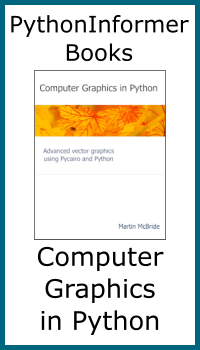Looping over selected items
Categories: python language intermediate python

Suppose you wanted to loop through a list of strings and print all the strings that are more than 3 characters long. You could do it like this:
values = ['a', 'bcd', 'efgh', 'pqrst', 'yz']
def longer_than_3(s):
return len(s) > 3
for v in values:
if longer_than_3(v):
print(v)
do_other_stuff()
The longer_than_3 function returns true if the string is longer than 3 characters, or false otherwise. If it is true, we print the
string, and maybe do some other stuff. If it is false, we skip the entire body of the loop.
This code is fine as it is, but we could improve it slightly using the filter function.
Using filter
The filter function accepts a predicate, and a sequence of values. A predicate is a function that accepts a single parameter, and returns a boolean value. For example, our longer_than_3 function is a predicate because it accepts a single paramter (a string) and returns True or False depending on whether the string has more than 3 characters.
filter applies the predicate to each item in the sequence, and returns a new sequence containing only those items for which the predicate returned true.
So how do we use filter in a loop? Well, much the same as reversed or any of the other loop functions, like this:
values = ['a', 'bcd', 'efgh', 'pqrst', 'yz']
def longer_than_3(s):
return len(s) > 3
for v in filter(longer_than_3, values):
print(v)
do_other_stuff()
The advantage of using filter
Clearly, our code is now one line shorter. But the real advantage, as ever, is that it makes the intent of the code clearer.
The filter function makes it totally clear that the filtering applies to the whole loop. It brings the filter functionality out
of the body of the loop and places it directly in for statement itself.
On the other hand, the if statement (in the original code at the start of the article) is a little more ambiguous. You need to
inspect the loop before deciding that the condition affects the entire loop body, rather than just part of it. This isn't too hard
with a simple two line loop body, but it is less obvious in complex code.
Using a lambda function
In this case, the function we are using is only a single line of code, so we can use a
lambda function instead of a function declaration. This definition creates an
unnamed lambda function equivalent to longer_than_3:
lambda x: len(x) > 3
Here is how we use it in the code (notice that the longer_than_3 function is no longer required):
values = ['a', 'bcd', 'efgh', 'pqrst', 'yz']
for v in filter(lambda x: len(x) > 3, values):
print(v)
do_other_stuff()
In summary, if you are writing a loop that only processes certain elements within the sequence, consider using a filter function
in the for loop, rather than an if statement in the body of the loop, to make the intent of the code clear.
If the selection criterion is a simple, one line function, consider using a lambda function for code brevity and readability.
Related articles
- List comprehensions
- Objects and variables
- Objects and identity
- Immutable objects
- Global variables
- Data types
- Lists vs tuples
- Sequences
- Named tuples
- Operators
- Short circuit evaluation
- Walrus Operator
- For loops
- For loop using range vs iterables
- Changing the loop order
- Using enumerate in a for loop
- Using zip in a for loop
- Looping over multiple items (old article)
- Functions
- Declaring functions
- Calling functions
- Function objects and lambdas
- Function decorators
- Exception handling
- With statements
- String functions
- Built-in functions
- Optimisation
- Optimisation good practice
- Low level code optimisation
- Structural optimisation
Join the GraphicMaths/PythonInformer Newsletter
Sign up using this form to receive an email when new content is added to the graphpicmaths or pythoninformer websites:
Popular tags
2d arrays abstract data type and angle animation arc array arrays bar chart bar style behavioural pattern bezier curve built-in function callable object chain circle classes close closure cmyk colour combinations comparison operator context context manager conversion count creational pattern data science data types decorator design pattern device space dictionary drawing duck typing efficiency ellipse else encryption enumerate fill filter for loop formula function function composition function plot functools game development generativepy tutorial generator geometry gif global variable greyscale higher order function hsl html image image processing imagesurface immutable object in operator index inner function input installing integer iter iterable iterator itertools join l system lambda function latex len lerp line line plot line style linear gradient linspace list list comprehension logical operator lru_cache magic method mandelbrot mandelbrot set map marker style matplotlib monad mutability named parameter numeric python numpy object open operator optimisation optional parameter or pandas path pattern permutations pie chart pil pillow polygon pong positional parameter print product programming paradigms programming techniques pure function python standard library range recipes rectangle recursion regular polygon repeat rgb rotation roundrect scaling scatter plot scipy sector segment sequence setup shape singleton slicing sound spirograph sprite square str stream string stroke structural pattern symmetric encryption template tex text tinkerbell fractal transform translation transparency triangle truthy value tuple turtle unpacking user space vectorisation webserver website while loop zip zip_longest
